Today, Monday, August 1, 2011, Arts, Page 2 & 3
From http://imcmsimages.mediacorp.sg/CMSFileserver/documents/006/PDF/20110801/0108ATP044.pdf
Source Website: http://www.todayonline.com/Entertainment/Arts/EDC110801-0000005/Colour-his-world
By Mayo Martin, 04:45 AM Aug 01, 2011
 PHOTO: Souri
PHOTO: Souri
Copyright © MediaCorp Press Ltd
http://www.todayonline.com/Entertainment/Arts/EDC110801-0000005/Colour-his-world
A retrospective on Liu Kang sheds light on the Nanyang pioneer artist

PHOTO: Liu Kang borrows traditional Chinese ink landscape styles but fills it with colour for Life By The River
Copyright © MediaCorp Press Ltd
Today, Monday, August 1, 2011, Arts, Page 2 & 3
"In terms of sheer colour, he is the boldest painter in the country; no one else tries, and gets away with, such flaring contrasts of red and blue as Liu Kang does."
That bold statement was uttered back in 1957 by the Singapore-based Australian art critic Frank Sullivan, and more than 50 years later, these words still resonate distinctly.
 PHOTO: A Girl Sitting On Verandah/ My Young Wife
PHOTO: A Girl Sitting On Verandah/ My Young Wife
Copyright © MediaCorp Press Ltd
http://www.todayonline.com/Entertainment/Arts/EDC110801-0000005/Colour-his-world
While there are many delightful aspects to pick out and mull over in Liu Kang: A Centennial Celebration, the ongoing survey show at the Singapore Art Museum, none stands out more than the late Nanyang pioneer's lust for life through his sheer passion for colour.
 PHOTO: Liu Kang's Offerings.
PHOTO: Liu Kang's Offerings.
Copyright © MediaCorp Press Ltd
http://www.todayonline.com/Entertainment/Arts/EDC110801-0000005/Colour-his-world
This is the fourth extensive exhibition on Singapore's pioneer artists by the National Art Gallery, Singapore, after Anthony Poon, Yeh Chi Wei and Cheong Soo Pieng; and over the course of 100 paintings, sketches and artefacts, audiences can immerse themselves in the world of an artist who had once described his life as colourful as his paintings.
The travelling man and his art
Like many of his contemporaries who would eventually emerge as the cornerstones of the country's fledgling art scene, Liu shuffled from place to place before settling in Singapore. Born in Fujian Province in China in 1911, he found himself in the Malaysian town of Muar, where his father worked as a rubber merchant. He later studied in Paris in the late 1920s, returning as the youngest lecturer in Shanghai Academy Of Fine Art.
 PHOTO: New Year Celebration In A Long House
PHOTO: New Year Celebration In A Long House
Copyright © MediaCorp Press Ltd
http://www.todayonline.com/Entertainment/Arts/EDC110801-0000005/Colour-his-world
With the onset of Sino-Japanese war in 1937, he relocated his family to Muar and then to Singapore. He would shuffle back and forth yet again before settling for good in Singapore after World War II, where he stayed until his death in 2004 at the age of 93.
The artist's wandering ways enabled him to soak in and combine influences from Asia and Europe. The touch of post-Impressionism is very obvious in works that proudly wear their badge of allegiance to Matisse, Picasso, Gauguin and - as in one obvious exercise in unabashed homage, a sunflower painting - Van Gogh.

PHOTO: Liu Kang borrows traditional Chinese ink landscape styles but fills it with colour for Life By The River
Copyright © MediaCorp Press Ltd
Today, Monday, August 1, 2011, Arts, Page 2 & 3
According to curator Ong Zhen Min, Liu never turned his back on his roots - the meticulous and studied use of lines in his paintings and drawings were drawn from the tradition of Chinese ink painting. In the famous piece, Life By The River, for example, Liu transports a kampong scene within a composition reminiscent of Chinese ink landscapes and renders it as an oil painting.
In Liu Kang: A Centennial Celebration, the exhibition itself eschews (avoid) the more linear, chronological approach to track down Liu's artistic journey - mostly because the Nanyang artist doesn't seem to lend himself to that.
 PHOTO: National Day
PHOTO: National Day
Copyright © MediaCorp Press Ltd
http://www.todayonline.com/Entertainment/Arts/EDC110801-0000005/Colour-his-world
"He moves back and forth styles," said Ong with a wry smile.
Even the curators' tactics to divide the show into four thematic (relating) sections - early works, artistic practices (line works, sketches),subject matter (works from his travels and motifs), and a "documentation" of Singapore and Malaya's landscapes - seem tenuous (not substantial) at times.
Depending on your disposition (inherent qualities of mind and character), it could either be frustrating or liberating. Or both.
 PHOTO: Souri
PHOTO: Souri
Copyright © MediaCorp Press Ltd
http://www.todayonline.com/Entertainment/Arts/EDC110801-0000005/Colour-his-world
However, freed from the weight of chronologically witnessing an artist developing his craft, one can see Liu Kang as a man of many dispositions. At times, he comes across as an artist who really seemed to love doing nudes or portraits, or, as the case may be, portraits of artists doing portraits or landscapes. Ong said that as an artist, Liu considered portraiture as a more solid foundation for an artist than still life.
 PHOTO: Siesta
PHOTO: Siesta
Copyright © MediaCorp Press Ltd
http://www.todayonline.com/Entertainment/Arts/EDC110801-0000005/Colour-his-world
At other times, in the subtlest of ways, the artist is a guy with a sense of humour. How else can you explain The Padang, with its image of a man with a lawnmower set in the middle of, well, the most recognisable field in the city? Or maybe he's simply one who is at once restless and playful in his attempts to jump from various styles.
While some observers may look at Liu as a one-dimensional artist - or at the very least, not as versatile or conceptually innovative as his fellow contemporary Cheong Soo Pieng, for example - his dedication and approach to the use of colour comes across as a satisfyingly unifying element in the show.
 PHOTO: Liu Haisu's Tenth Trip To Mount Huangshan
PHOTO: Liu Haisu's Tenth Trip To Mount Huangshan
Copyright © MediaCorp Press Ltd
http://www.todayonline.com/Entertainment/Arts/EDC110801-0000005/Colour-his-world
How colour shaped Liu Kang's world
The use of colour had been something that was hinted early on in Liu's career, but seemed to have exploded after the now-historically seminal Bali trip in 1952 with the likes of fellow artists Cheong, Chen Wen Hsi and Chen Chong Swee.
 PHOTO: Liu Kang's Indian Musicians.
PHOTO: Liu Kang's Indian Musicians.
Copyright © MediaCorp Press Ltd
http://www.todayonline.com/Entertainment/Arts/EDC110801-0000005/Colour-his-world
The emergence of more vibrant colours in his works - arguably even more so than the rest of his contemporaries - was brought about by the efforts to capture his tropical surroundings, said Ong. But it wasn't only the environment that burst with colours. Liu was also entranced by batik patterns, which he wove into to works like Women Drying Sarongs.
But it wasn't just colour that oozed from his works post-Bali. More importantly, Liu began to actively articulate what was integral in this so-called Nanyang style of art, with its mix of East and West in a tropical blender.
 PHOTO: Artist And Model
PHOTO: Artist And Model
Copyright © MediaCorp Press Ltd
http://www.todayonline.com/Entertainment/Arts/EDC110801-0000005/Colour-his-world
From the 1950s, Liu became a vocal advocate (publicly supports or recommends) of Nanyang art, said co-curator Grace Tng. He presided over the Singapore Art Society for a decade in the late 1960s and, while his contemporaries were seemingly focused on simply making art, Liu also dabbled in writing about art. His writings can be seen in Liu Kang:
Essays On Art And Culture, a compilation of his articles that has been translated from Chinese into English to coincide with this retrospective (looking back on) exhibition.

PHOTO: The National Art Gallery, Singapore, will be commemorating the centennial birth of Liu Kang (1911 – 2011).
http://www.mhisham.org/wp-content/uploads/2011/03/416px-LiuKangBackView.jpg
http://www.mhisham.org/?p=1743
From articles about fellow artists like Chen Wen His and Georgette Chen, to his musings on music, medical science - and even French ballet; to his travel observations on India and Bali, to problematising Singapore's own art scene, and even pushing, way ahead of its time, the idea for a South-east Asian arts centre, Liu was more than an artist - he was an intellectual. And that, really is what makes him stand out.
 PHOTO: The National Art Gallery, Singapore, will be commemorating the centennial birth of Liu Kang (1911 – 2011).
PHOTO: The National Art Gallery, Singapore, will be commemorating the centennial birth of Liu Kang (1911 – 2011).
http://www.mhisham.org/wp-content/uploads/2011/03/481px-LiuKangRecollection.jpg
http://www.mhisham.org/?p=1743
Liu Kang: A Centennial Celebration runs until Oct 16 at the Singapore Art Museum, 71 Bras Basah Road.
For details visit www.nationalartgallery.sg. Liu Kang: Essays On Art And Culture is available at S$28.88 from Museum Shop, Kinokuniya and Select Books.
Reference
































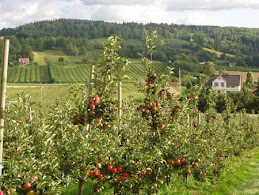










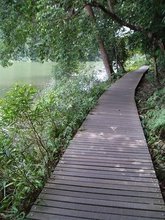







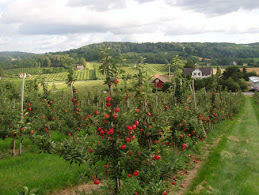



.jpg)
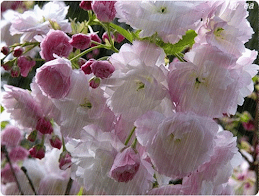.gif)
.jpg)

























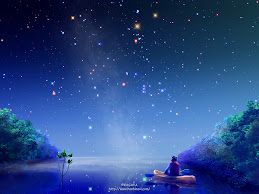























%20-%20%E5%82%B7%E5%BF%83%E7%9A%84%E8%B7%AF%20(Sh%C4%81ng%20x%C4%ABn%20de%20l%C3%B9)%20-%20The%20Road%20of%20Sorrow%20(With%20Subtitle)_11.png)






